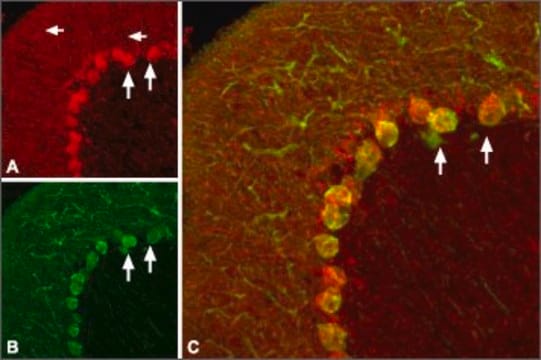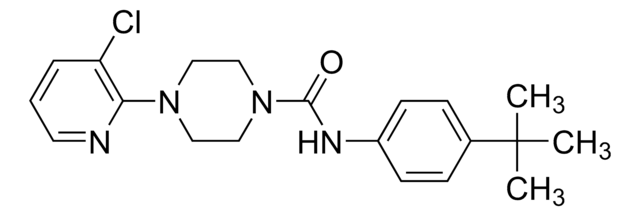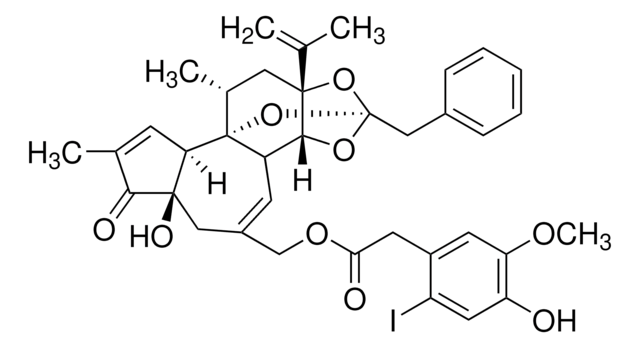C191
Capsazepine
≥98% (HPLC), solid, TRPV1 antagonist
Sinonimo/i:
N-[2-(4-Chlorophenyl)ethyl]-1,3,4,5-tetrahydro-7,8-dihydroxy-2H-2-benzazepine-2-carbothioamide
Scegli un formato
Scegli un formato
About This Item
Prodotti consigliati
Nome del prodotto
Capsazepine, ≥98% (HPLC), solid
Livello qualitativo
Saggio
≥98% (HPLC)
Stato
solid
Colore
off-white
Solubilità
DMSO: >10 mg/mL, clear
Temperatura di conservazione
2-8°C
Stringa SMILE
Oc1cc2CCCN(Cc2cc1O)C(=S)NCCc3ccc(Cl)cc3
InChI
1S/C19H21ClN2O2S/c20-16-5-3-13(4-6-16)7-8-21-19(25)22-9-1-2-14-10-17(23)18(24)11-15(14)12-22/h3-6,10-11,23-24H,1-2,7-9,12H2,(H,21,25)
DRCMAZOSEIMCHM-UHFFFAOYSA-N
Informazioni sul gene
human ... TRPV1(7442) , TRPV4(59341)
rat ... Trpv1(83810)
Cerchi prodotti simili? Visita Guida al confronto tra prodotti
Applicazioni
- to study its effect on capsaicin induced extracellular signal-regulated kinase (ERK) phosphorylation[1]
- to study the role of TRPV1 in central terminals on nociception in rats[2]
- for functional characterization of the TRPV1 in bull spermatozoa[3]
Azioni biochim/fisiol
Codice della classe di stoccaggio
11 - Combustible Solids
Classe di pericolosità dell'acqua (WGK)
WGK 3
Punto d’infiammabilità (°F)
Not applicable
Punto d’infiammabilità (°C)
Not applicable
Dispositivi di protezione individuale
Eyeshields, Gloves, type N95 (US)
Scegli una delle versioni più recenti:
Certificati d'analisi (COA)
Non trovi la versione di tuo interesse?
Se hai bisogno di una versione specifica, puoi cercare il certificato tramite il numero di lotto.
Possiedi già questo prodotto?
I documenti relativi ai prodotti acquistati recentemente sono disponibili nell’Archivio dei documenti.
I clienti hanno visto anche
Active Filters
Il team dei nostri ricercatori vanta grande esperienza in tutte le aree della ricerca quali Life Science, scienza dei materiali, sintesi chimica, cromatografia, discipline analitiche, ecc..
Contatta l'Assistenza Tecnica.










